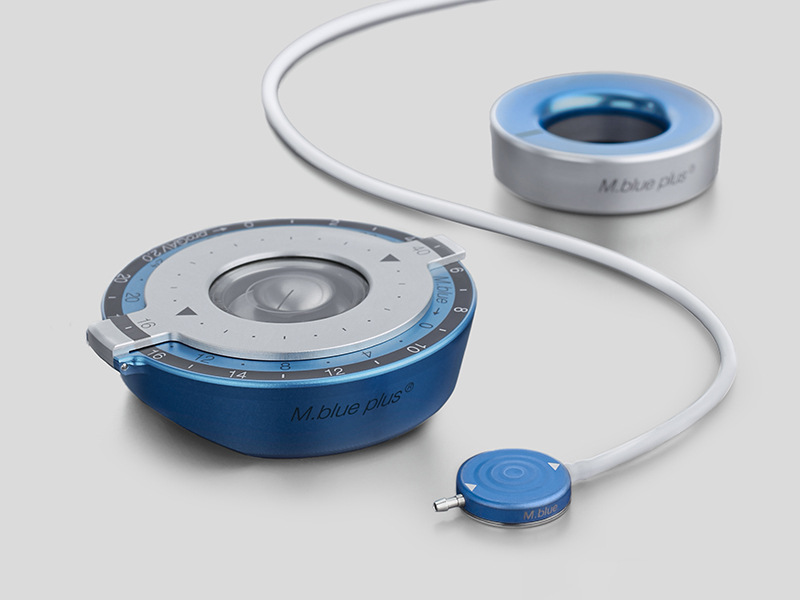No content results match your keyword.
Content
You have successfully logged out.
Not registered yet?
Neurosurgery
Gravitational valves improve patient outcomes

MIETHKE gravitational shunts offer special protection to avoid position-dependent complications such as over- and underdrainage, with positive clinical outcomes for the patient and a significant reduction of overdrainage events. [1-4]
All MIETHKE valves are manufactured with high precision from titanium and are protected against unintentional reprogramming by magnetic fields of up to 3 Tesla.5
Advances in shunt technology, in particular adjustable and gravitational valves, have improved patient outcomes.6-7 Finding the best possible patient-individual pressure setting and assessing shunt function can however be challenging and time-consuming. M.scio® is a telemetric pressure sensor approved for permanent implantation. Valve adjustments following telemetric read-out of the pressure via the M.scio® improve outcomes in most patients and knowledge of the pressure can help to avoid unnecessary hospitalizations, investigations, and radiation exposure. 6-8
Google Play preview and free download >>
Google Play preview and free download >>
It will be forwarded to a responsible contact person who will get in touch with you as soon as possible.
1. Tschan CA, Antes S, Huthmann A, et al. Overcoming CSF overdrainage with the adjustable gravitational valve proSA. Acta Neurochir (Wien). 2014;156(4):767-76; discussion 776.
2. Suchorska B, Kunz M, Schniepp R, et al. Optimized surgical treatment for normal pressure hydrocephalus: comparison between gravitational and differential pressure valves. Acta Neurochir (Wien). 2015;157(4):703-9.
3. Lemcke J, Meier U, Muller C, et al. Safety and efficacy of gravitational shunt valves in patients with idiopathic normal pressure hydrocephalus: a pragmatic, randomised, open label, multicentre trial (SVASONA). J Neurol Neurosurg Psychiatry. 2013;84(8):850-7
4. Sprung C, Schlosser HG, Lemcke J, et al. The adjustable proGAV shunt: a prospective safety and reliability multicenter study. Neurosurgery. 2010;66(3):465-74.
5. Chari A, Czosnyka M, Richards HK, Pickard JD, Czosnyka ZH. Hydrocephalus shunt technology: 20 years of experience from the Cambridge Shunt Evaluation Laboratory. J Neurosurg. 2014;120(3):697-707.
6.Antes S, Stadie A, Muller S, et al. Intracranial Pressure-Guided Shunt Valve Adjustments with the Miethke Sensor Reservoir. World Neurosurg. 2018;109:e642-e50.
7. Freimann FB, Schulz M, Haberl H, et al. Feasibility of telemetric ICP-guided valve adjustments for complex shunt therapy. Childs Nerv Syst. 2014;30(4):689-97.
8. Thompson S, Thorne L, Toma A, et al. Telemetric monitoring of ICP within a shunt system. A single centre experience including the first in vivo comparison versus conventional intraparenchymal monitoring. Fluids and Barriers of the CNS. 2017;14(Suppl 1):A63.
Your feedback matters! Participate in our customer survey to help us enhance our website, products and services. Thank you for your support!